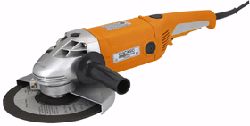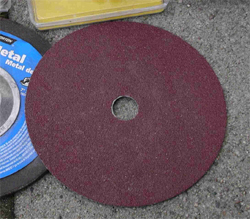 Sometimes concrete ponds are constructed and virtually no thought is given to how the surface should be in regards to it being able to accept a waterproofing coating later. Sometime the surface is either too smooth or too rough and needs to be corrected prior to applying the coating.
Sometimes concrete ponds are constructed and virtually no thought is given to how the surface should be in regards to it being able to accept a waterproofing coating later. Sometime the surface is either too smooth or too rough and needs to be corrected prior to applying the coating.
I have seen people use brick in the ponds also. Now brick is a funny material. It is either too porous or ultra smooth. Porous brick is not usually an issue because the pore can be filled, but ultra smooth brick can cause future delaminating if it is not properly surfaced prior to coating. The techniques to handle this type of brick would be the same as with concrete to be explained here.
I find that one of the easiest ways to make a smooth surface more rough is to sand blast it. Of course sand blasting has its pros and cons. For one thing, it most certainly will clean a surface pretty well and give a nice texture to accept a coating, but it also makes a serious mess. You’ll end up with sand everywhere and it will be there until your surrounding yard assimilates that which couldn’t be cleaned up.
Also with sand blasting, you’ll have to hire someone to do it. It’s not likely you own the equipment necessary and probably do not have the skills either. That is ok though, because there is at least one other way to accomplish this.
My favorite way is to use a large 8” angle grinder. Suit up in protective eyewear and a face mask and you can go to town with a tool like this and either smooth out the concrete or rough it up as needed. They work wonders. Let me explain.
 If you use a flexible sanding disc on an 8” angle grinder it allows you to cut away imperfections in the concrete while at the same time protects the concrete from you accidentally gouging to some degree. This means you can float the grinder over the surface and follow the natural contours more closely without cutting away too much concrete.
If you use a flexible sanding disc on an 8” angle grinder it allows you to cut away imperfections in the concrete while at the same time protects the concrete from you accidentally gouging to some degree. This means you can float the grinder over the surface and follow the natural contours more closely without cutting away too much concrete.
Use a 24 grit sanding disc for the process as it will leave a more desired surface afterwards. Not to mention it will last longer since it is coarser. Be sure to aim the spin of the grinder away from yourself. There’s no sense in directing debris right at yourself. It not only hinders your sight but the flying debris can injure you as well.
Take Gunite for instance. Usually a Gunite installer will assume that you plan to apply a plaster coating to the new pool or pond and he or she will normally apply a broomed finish to the Gunite surface. That is fine and dandy for a plaster surface, but no good for applying a coating. If you apply the coating to a surface like that, you are likely to waste a bunch of material just trying to fill in-between the broomed gaps.
Finally, as I said before, this scenario works fine for smooth brick too. If you can just give the brick a new surfacing, it will give the coating much more to grab hold of during the application process, which will give you a longer life with the coating.
Keep in mind that this process will also be helpful when smoothing out mortar joints too. Sometimes masons can get a little slopping with their joints and there’s no reason to just coat over them as is. Clean them up first.


